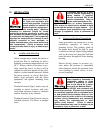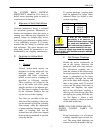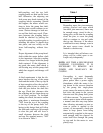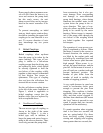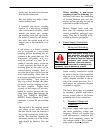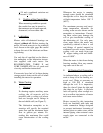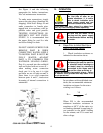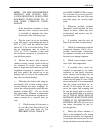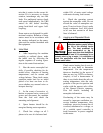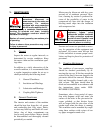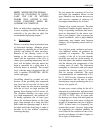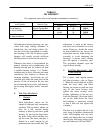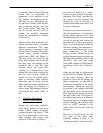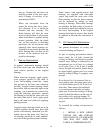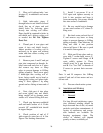
GEK-95352
13
NOTE SEE IEEE RECOMMENDED
PRACTICE FOR TESTING INSU-
LATION RESISTANCE OF ROTATING
MACHINES, PUBLICATION NO. 43,
FOR MORE COMPLETE INFOR-
MATION.
If the insulation resistance is lower
than this value, it may be wet and it
is advisable to eliminate the mois-
ture in one of the following ways:
a. Dry the stator in an air circulating
oven with the air surrounding the part at
95ºC to 115ºC until the stator has been
above 90º C for at least four hours. Then
the air temperature may be raised to
135ºC to 1 15ºC. Continue to heat until
the insulation resistance is constant for a
one-half hour period.
b. Enclose the motor with canvas or
similar covering, leaving a hole at the top
for moisture to escape. Insert heating
units or lamps and leave them on until the
insulation resistance is constant for one-
half hour period. Be careful not to get
heating units so close to the winding that
they cause localized damage.
c. With the rotor locked and using ap-
proximately 10% of rated voltage, pass a
current through the stator windings. In-
crease the current gradually until the tem-
perature reaches 90ºC . Do not exceed
this temperature. Maintain a temperature
of 90ºC until the insulation resistance be-
comes constant for a one-half hour pe-
riod.
2. Check bearing oil reservoirs to
be sure they have been filled to the
proper level with fresh oil. See
RELUBRICATION, TABLE II,
and LUBE NAMEPLATE on motor
for oil grade and viscosity and fur-
ther instructions. Be sure filler caps
and drain plugs are securely tight-
ened.
3. Whenever possible, examine
the interior of the machine for loose
objects or debris which may have
accumulated, and remove any for-
eign material.
4. If possible, turn the rotor by
hand to be sure that it rotates freely.
5. Check all connections with the
connection diagram. Check all ac-
cessible factory-made connections
for tightness to make sure none has
become loose during shipment.
6. Check water-cooling connec-
tions, flow, and temperature.
7. If possible leave motor un-
coupled (or uncouple it) for initial
operation so that motor vibration,
noise, current and bearings can be
checked uncoupled before they are
masked by the pump. To run a VHS
motor uncoupled, it is recommended
that the pump head-shaft be re-
moved. If this cannot be done re-
move the upper half-coupling and
be sure the pump shaft is well cen-
tered in the motor shaft so it will not
rub. IF THIS IS DONE, ROTATE
MOTOR BY HAND TO BE SURE
THERE IS NO INTERFERENCE
BETWEEN SHAFTS. Do not try to
run motor uncoupled by just re-
moving gib-key.
8. When the driven machine is
likely to be damaged by the wrong
direction of rotation, it is imperative
to uncouple the motor from its load
during the initial start and make cer-




